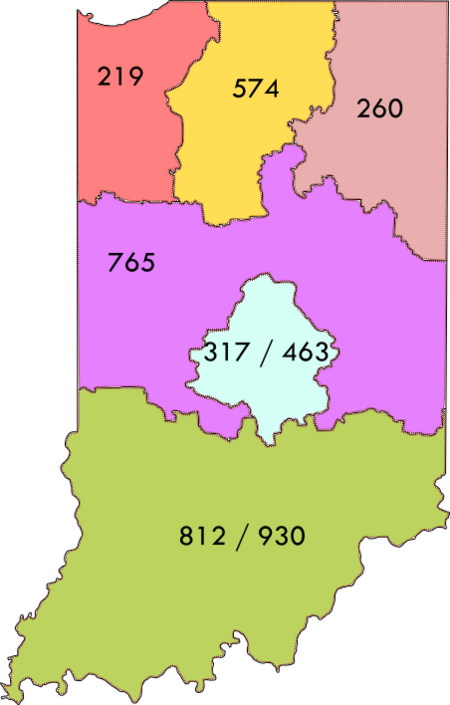Area codes 317 and 463
Area codes in IndianaArea codes in the United StatesBoone County, IndianaHamilton County, IndianaHancock County, Indiana ... and 12 more
Hendricks County, IndianaHenry County, IndianaIndianapolisIndianapolis metropolitan areaJohnson County, IndianaMadison County, IndianaMarion County, IndianaMorgan County, IndianaShelby County, IndianaTelecommunications-related introductions in 1947Telecommunications-related introductions in 2016Use mdy dates from April 2023

Area codes 317 and 463 are telephone area codes in the North American Numbering Plan (NANP) for Indianapolis and nine surrounding counties in central Indiana. The numbering plan area (NPA) comprises all or parts of Marion, Boone, Hancock, Hamilton, Hendricks, Johnson, Madison, Morgan, and Shelby counties. 317 is the original area code of the NPA, created in 1947, while 463 is an overlay code for the same area that was added in 2016, making ten-digit dialing mandatory for all calls in the region.
Excerpt from the Wikipedia article Area codes 317 and 463 (License: CC BY-SA 3.0, Authors, Images).Area codes 317 and 463
Monument Circle, Indianapolis
Geographical coordinates (GPS) Address Nearby Places Show on map
Geographical coordinates (GPS)
| Latitude | Longitude |
|---|---|
| N 39.768333 ° | E -86.158056 ° |
Address
Soldiers and Sailors Monument
Monument Circle 1
46204 Indianapolis
Indiana, United States
Open on Google Maps











